Posted by Elena del Valle on September 24, 2020
By Joy Gendusa
Owner, PostcardMania

Joy Gendusa, owner, PostcardMania
Photo: PostcardMania
In this new pandemic age, many businesses felt the impact of COVID-19 in a major way, including my own, PostcardMania. The first wave of mandated closures wreaked havoc on our bottom line, dealing a massive 41 percent hit to weekly revenue earnings. Instead of sitting around waiting for our luck to change, however, we took several pivotal actions that allowed us to rebound to pre-crash numbers and have the best summer in our 22-year history.
The first thing we did was look around at all the coronavirus information overflow and say, “Holy smokes, we need to help our clients filter this and find relevant information.” (Small businesses are our primary clientele.) Small businesses were hugely impacted by the pandemic panic and mandatory shutdowns, and we wanted to help them find information that would help them stay afloat and maybe even thrive during period in history. Click to read the entire Guest Article: Covid-19 Marketing Idea: $117,514.21 Generated from Email Marketing
Posted by Elena del Valle on September 17, 2020

Light and Space
Photo, video: KECT
For serious art lovers California PBS station KCET will premier the eleventh season of Artbound at 9 p.m. P.T. Wednesday September 30. The hour long program featuring three artists and their work will focus on The Light and Space movement of a group of artists in California in the 1960s who explored minimalism with attention to the interaction of light and space. The materials the artists relied on to create their “perceptual experiences,” such as polyurethane, fiberglass and plastics, emerged from the postwar aerospace industry. The artists are Robert Irwin, Larry Bell, and Helen Pashgian. Primary production was December 2019 to February 2020. Scroll down to watch a video preview.
Artbound is an Emmy award-winning arts and culture series that examines the lives and works of arts of culture innovators, especially those making an impact in Southern California. The first episode will air again at 8 p.m. P.T. on Friday October 2 on PBS SoCal and at 10 p.m. E.T./P.T. Tuesday October 6 on Link TV (DirecTV channel 375 / Dish Network channel 9410). The episodes should also be available for online streaming following their initial broadcast on kcet.org/artbound, pbssocal.org/artbound and linktv.org/artbound as well as on Amazon, YouTube, Roku, Apple TV and the free PBS App.
Video
Posted by Elena del Valle on September 3, 2020
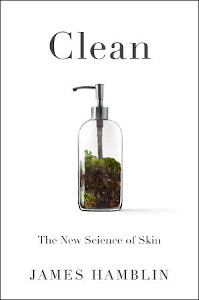
Clean
Photo: Penguin Random House/Riverhead Books
James Hamblin, a former radiology resident at the University of California Los Angeles turned health writer, begins the Prologue of his new book by letting readers know he hasn’t showered in five years. Several researchers and experts he interviewed indicated they too showered infrequently. He wets his hair daily and washes his hands, but he mostly stopped using soap on his body and shampoo, he said in the book. Beyond that there is little more to guide readers on the topic of showers and hygiene (other than a list of references at the end of the book).
In Clean The New Science of Skin (Riverhead Books, $28) he explores the history of soap and discusses beauty and cosmetic products at length, interviews researchers and wraps up with a discussion of toilets and public health. The 280-page hardcover book published this year is divided into: Prologue, Immaculate, Purify, Lather, Glow, Detoxify, Minimize, Volatile, Probiotic, Refresh and Epilogue.
In the Epilogue he points out that one of the most dangerous places to catch an infection is a hospital. Health care providers, he says, spread infections around hospitals. He points to government data indicating that one in every thirty-one patients in hospitals in the United States acquires an infection while at the facility. He suggests that what might make our skin look good is eating and sleeping well, keeping our anxiety under control and spending time in nature.
Based in Brooklyn, New York Hamblin is a staff writer at The Atlantic and a lecturer at the Yale School of Public Health. His first book, If Our Bodies Could Talk, addressed topics such as dimples, tattoos, getting rid of eyelashes, stomach rumbling and how to sit. Although he responded to an initial email he failed to respond to questions as of this writing.

Click to buy Clean
Posted by Elena del Valle on August 24, 2020
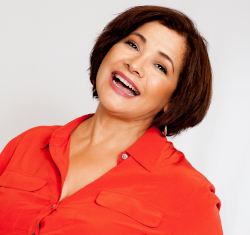
Bel Hernandez Castillo, CEO, Latin Heat Media

Naibe Reynoso, founder, Con Todo Press
Photos: Laura Sixtos, Naibe Reynoso
A podcast interview with Bel Hernandez Castillo, CEO, Latin Heat Media and Naibe Reynoso, founder, Con Todo Press is available in the Podcast Section of Hispanic Marketing and Public Relations, HispanicMPR.com. We discuss entrepreneurship among Latinas.
Bel has over twenty-five years in the entertainment industry, first as an actress then transitioning into entertainment media, as founder the first entertainment trade publication focused on Latinos in Hollywood, Latin Heat Entertainment. She also owns a production company and a streaming platform. As producer she co-created, executive produced, and hosted three TV talk shows; currently TheTrendTalk, a talk show which highlight Latinos, airs on the METV’s network (KAZA in Los Angeles).
Naibe is a Mexican-American Multi-Emmy award-winning journalist based in Los Angeles California. She authored Be Bold, Be Brave: 11 Latinas who made U.S. History, a children’s book. She has worked and contributed to various regional, national and international networks including KTLA, France 24, Univision Network, Reelz Channel, CNN en Español, the Biography Channel, Fox News Latino, Larry King’s ORA TV, and filled in as a co-host on ABC’s The View. She also co-created The TrendTalk, a one-hour talk show and co-founded the events company Latinafest LLC which has produced over a dozen successful events in the Los Angeles Area.
To listen to the interview, scroll down and click on the play button below or locate the “Podcast” section on the right hand side, then choose “HMPR Bel Hernandez, Naibe Reynoso” or download the MP3 file to your iPod or MP3 player to listen on the go, in your car or at home from the RSS feed. Some software will not allow flash, which may be necessary for the podcast player. If that is your case, you will need to download the file to play it. To download it, click on the arrow of the recording you wish to copy and save it to disk. The podcast will remain listed in the August 2020 section of the podcast archive.
Posted by Elena del Valle on August 19, 2020

Gustavo Dudamel, host of the new series In Concert at the Hollywood Bowl
Photo, video: Adam Latham, KCET, Los Angeles Philharmonic Association
Southern California station KCET and the Los Angeles Philharmonic Association (LA Phil) will offer In Concert at the Hollywood Bowl, a six episode series of performances from the past 10 years. Hosted by Gustavo Dudamel, music and artistic director of the Philharmonic, the series will launch Wednesday, August 19, 2020 at 9 p.m. P.T. on KCET with Hecho in Mexico (Made in Mexico). It is scheduled to be broadcast on PBS stations around the country in early 2021, according to a press release. Scroll down to watch a video.
Hecho en Mexico features Dudamel and the LA Phil, Rodrigo y Gabriela, Natalia Lafourcade, Los Angeles Azules, YOLA (Youth Orchestra Los Angeles), and La Santa Cecilia. Gustavo and Friends is scheduled to air a week later at the same time featuring Dudamel, LA Phil, Misty Copeland, Pablo Ferrández, Amanda Majeski, J’Nai Bridges, Issachah Savage, Ryan Speedo Green, and the Los Angeles Master Chorale (LAMC).
On September 2 at 9 p.m the series will feature Jazz at the Hollywood Bowl Featuring Dianne Reeves with Ivan Lins, Christian McBride, Chucho Valdes, Cecile McLorin Salvant, Kamasi Washington and Mega Nova (Herbie Hancock, Carlos Santana and Wayne Shorter). Musicals and the Movies is scheduled for the following Wednesday featuring Dudamel, LA Phil, Kristin Chenoweth with Kevin Stites Audra McDonald with Bramwell Tovey, and Sutton Foster with Brian Stokes Mitchell.
Música Sin Fronteras (Music Without Borders) is scheduled to air Wednesday September 16 at 9 p.m. P.T. to celebrate Hispanic Heritage Month with Scully, Dudamel and LA Phil, Carlos Vives, Café Tacvba, Siudy Garrido Flamenco Dance Theater, and Paolo Bortolameolli. Fireworks! is scheduled for the following Wednesday at the same time featuring Katy Perry, Pink Martini, Thomas Wilkins, Nile Rodgers & Chic, Diego El Cigala, Dudamel and LA Phil, and John Williams.
With a seating capacity of nearly 18,000, the Hollywood Bowl is among the largest natural amphitheaters in the world. KCET, a content channel of the Public Media Group of Southern California, is a donor-supported community institution, according to press materials. The Los Angeles Philharmonic Association presents live performances of orchestral, pop, rock, country, jazz, blues, Latin, world music, opera, chamber, Baroque, organ and celebrity recitals, theatrical performances, explorations of film music, dance, comedy, and multimedia productions.
Posted by Elena del Valle on July 30, 2020

The Body A Guide for Occupants
Photo: Doubleday
In The Body A Guide for Occupants (Doubleday, $30) Bill Bryson, an American writer (born in Des Moines, Iowa) living in England, explores the human body. The 450-page hardcover book was published in 2019. Using some lesser known and unexpected tidbits he entertains readers with a curious and light exploration of some aspects of the human body, dispensing with gory descriptions. Often his discussion includes history and historic figures or quotes from authors, researchers and academics.
For example, in the chapter on Nerves and Pain he quotes Patrick Wall as a leading British neuroscientist and author of Pain: The Science of Suffering; and Oliver Sacks, who in a book on migraines described almost one hundred types of migraines. In The Outside: Skin and Hair chapter he quotes Peter Stark in Last Breath: Cautionary Tales from the Limits of Human Endurance, saying that a man who weighs 155 pounds has about 42 quarts of water in his body; and he will lose one and a half quarts of water a day via urination, sweat and respiration.
The hardcover book is divided into 23 chapters: How to Build a Human; The Outside: Skin and Hair; Microbial You; The Brain; The Head; Down the Hatch: The Mouth and Throat; The Heart and Blood; The Chemistry Department; In the Dissecting Room: The Skeleton; On the Move: Bipedalism and Exercise; Equilibrium; The Immune System; Deep Breath: The Lungs and Breathing; Food, Glorious Food; The Guts; Sleep; Into the Nether Regions; In the Beginning: Conception and Birth; Nerves and Pain; When Things Go Wrong: Diseases; When Things Go Very Wrong: Cancer; Medicine Good and Bad; and The End.
Bryson is author of 19 other books, including A Walk in the Woods, The Life and Times of the Thunderbolt Kid, and A Short History of Nearly Everything. He was chancellor of Durham University, England’s third oldest university, from 2005 to 2011, and is an honorary fellow of Britain’s Royal Society.
According to his FaceBook page he met his wife in England, where they settled; he wrote for The Times and The Independent before moving back to the United States with his wife and four children. He and his family moved back to England in 2003.
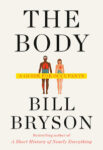
Click to buy The Body: A Guide for Occupants
Posted by Elena del Valle on July 27, 2020
Your payment has been made and the transaction completed.
Please submit your job ad materials as described on the job ads page.
PayPal should send you details for your payment transaction. Log into your paypal account to view transaction details.
Posted by Elena del Valle on July 20, 2020
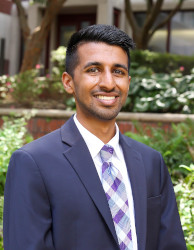
Zuhair Haleem, Ph.D. student, University of Florida
A podcast interview with Zuhair Haleem, Ph.D. student, University of Florida, is available in the Podcast Section of Hispanic Marketing and Public Relations, HispanicMPR.com. During the podcast, he discusses a 2020 University of Florida DEET study with Elena del Valle, host of the HispanicMPR.com podcast.
Zuhair works in the Department of Health Services Research, Management & Policy in the College of Public Health at the University of Florida. Zuhair holds a master’s degree in health administration from Virginia Commonwealth University (VCU). Prior to joining the University of Florida he spent two years as a process improvement specialist for the Inova Health System in the DC suburbs of Virginia. Zuhair has also worked for VCU Health’s Office of Health Innovation as well as the Virginia Health Care Foundation, two Richmond based organizations that support Virginia’s health care safety net through population health management strategies. Zuhair’s research interests are in the areas of health policy and health economics, specifically addressing disparities in health outcomes.
To listen to the interview, scroll down until you see “Podcast” on the right hand side, then select “HMPR Zuhair Haleem” and click on the play button below or download the MP3 file to your iPod or MP3 player to listen on the go, in your car or at home from the RSS feed. Some software will not allow flash, which may be necessary for the play button and podcast player. If that is your case, you will need to download the file to play it. To download it, click on the arrow of the recording you wish to copy and save it to disk. The podcast will remain listed in the July 2020 section of the podcast archive.
Posted by Elena del Valle on July 6, 2020
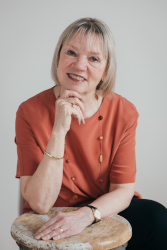
Susan J. Douglas, author, In Our Prime
Photo: H. Nash
A podcast interview with Author Susan J. Douglas is available in the Podcast Section of Hispanic Marketing and Public Relations, HispanicMPR.com. We will discuss her new book In Our Prime: How Older Women are Reinventing the Road Ahead (W.W. Norton and Company, $25.95).
Susan is the Catherine Neafie Kellogg Professor and Arthur F. Thurnau professor of Communication and Media at The University of Michigan. In Our Prime was recommended as an “Editors’ Choice/Staff Picks” by The New York Times and hailed by the Associated Press as a “masterful takedown of gendered ageism.” She is author of Celebrity: A History of Fame, The Rise of Enlightened Sexism: How Pop Culture Took us from Girl Power to Girls Gone Wild; The Mommy Myth: The Idealization of Motherhood and How it Undermines Women with Meredith Michaels; Listening In: Radio and the American Imagination, which won the Hacker Prize in 2000 for the best popular book about technology and culture; Where The Girls Are: Growing Up Female with the Mass Media; and Inventing American Broadcasting, 1899-1922.
To listen to the interview, scroll down and click on the play button below or locate the “Podcast” section on the right hand side, then choose “HMPR Susan J. Douglas” or download the MP3 file to your iPod or MP3 player to listen on the go, in your car or at home from the RSS feed. Some software will not allow flash, which may be necessary for the podcast player. If that is your case, you will need to download the file to play it. To download it, click on the arrow of the recording you wish to copy and save it to disk. The podcast will remain listed in the July 2020 section of the podcast archive.
Click to buy In Our Prime




















